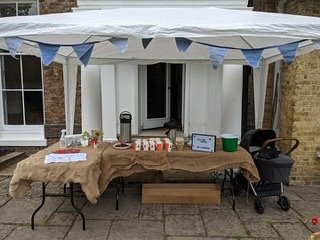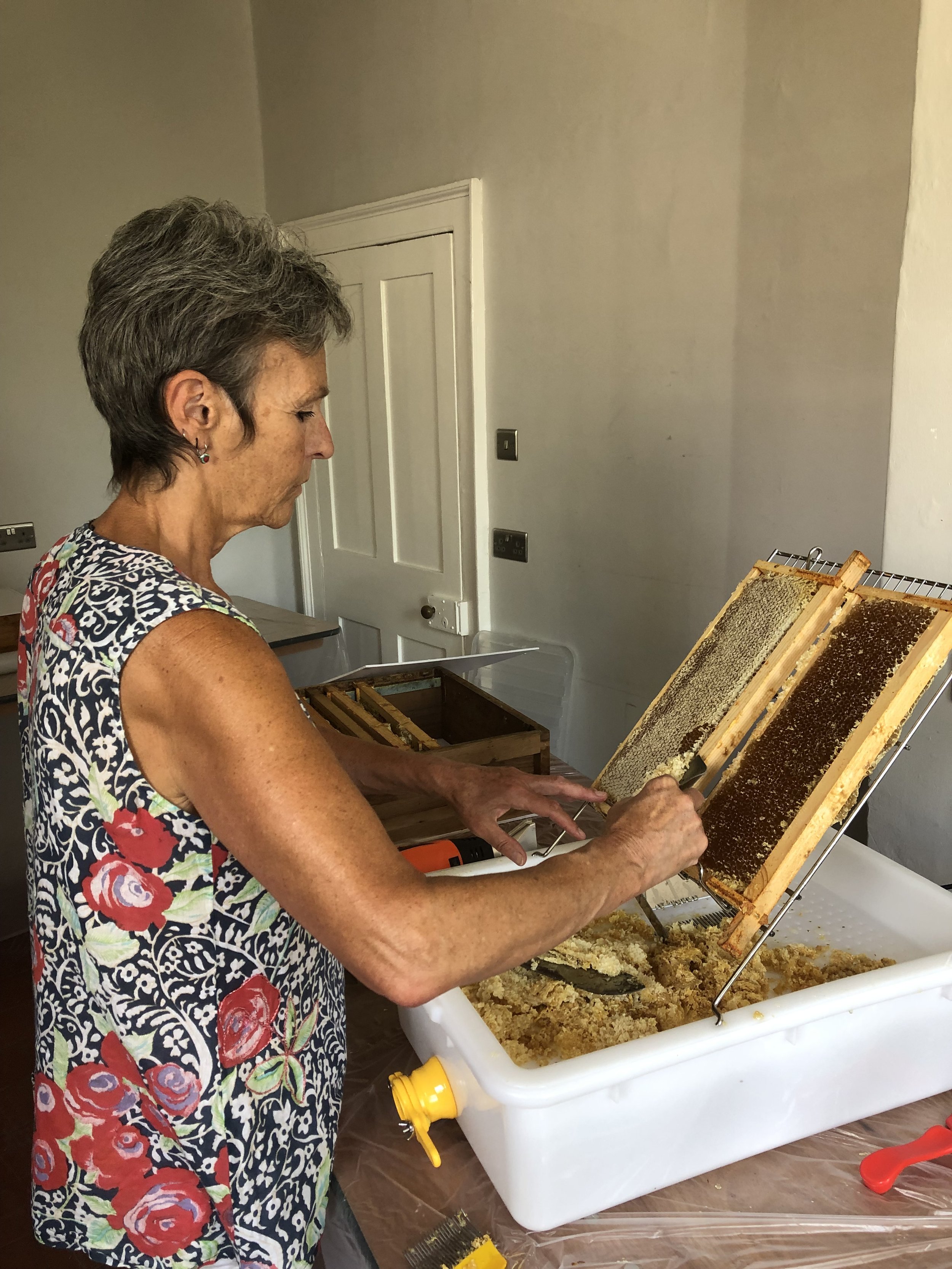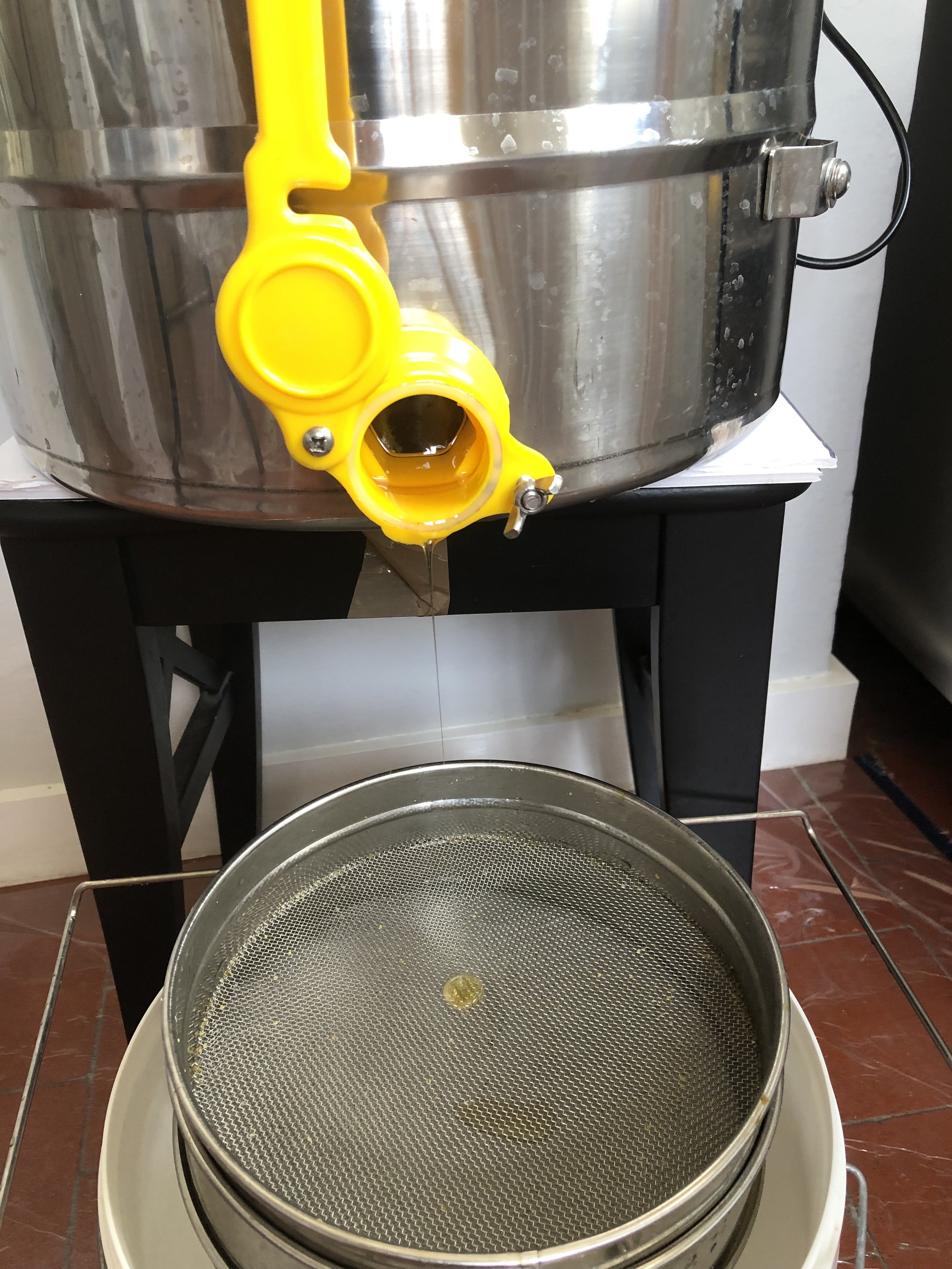The arrival of rain at the beginning of September was welcomed by the garden…and the gardeners! Everything in the Bell House garden really perked up after the very dry spell, and we were all kept busy with the growth explosion.
September highlights, and things to look forward to, include:
The meadow areas in both the House Garden and Walled Garden are in the process of being cut back in sections. The cuttings are left for a few days before being added to the compost bins so any insects which have been sheltering there can find a new home. Cuttings are removed to reduce nutrients being added back to the soil as meadows thrive on poor soil. Our next job will be to scarify the meadows and add yellow rattle seeds to slow the spread of grass so more wildflowers grow. We tested removing the flower heads of docks this year rather than digging them out and we will see next summer if this worked! Big thanks to everyone who worked on the meadows as it is a labour intensive job. A shout out for Jenny who put her hand up every Saturday to tackle this job.
In the Walled Garden, the tomatoes are still going strong. We know that the cooler days and nights are coming so the tomato plants have been pruned, removing the leaves so that the plants direct their energy to ripening the remaining fruit. The garlic and onions were also lifted, and after drying nicely for a couple of weeks, have been happily received by all of us gardeners 😊. We have had a new delivery of bricks so that edging around the raised beds can continue, led by the expertise of Cookie and Reg. Our new mower finally arrived so we now have two electric mowers to help manage the grass and meadow areas next year.
Staying in the Walled Garden, you’ll see some “new” tables close to the Greenhouse. When a local garden centre closed down we picked up the tables which will be adapted to use as potting and demonstration tables. Also, at that end of the garden, the raspberries which were saved from the ground source heating works have never been super happy there so will be lifted and moved to another part of the garden. This bed will then be planted with Comfrey, specifically Bocking 14 Comfrey as suggested by Shelagh. Comfrey is one of the most useful and versatile plants that can be grown – it’s a fabulous pollinator attractor, a highly effective fertiliser and apparently has potential health benefits for humans (I need to find out more about this).
Over in the House Garden, there has been a fair bit of weeding action over September – in the Rose Garden, around the arch leading to the Rose Garden and throughout all of the main beds. Our winter project will be to improve and replant the long border with more perennials and grasses. We also plan to work on the quince and rose arch, pruning the roses so that they flower lower at the sides and leaving more light and space for the quince to grow over the arch itself.
Bell House Garden will be open again on November 5th.
Arrive anytime between 11am and 12:45. Tea and coffee will be available. We encourage a £5 donation that will go towards garden maintenance and activities. Free tickets are also available.





